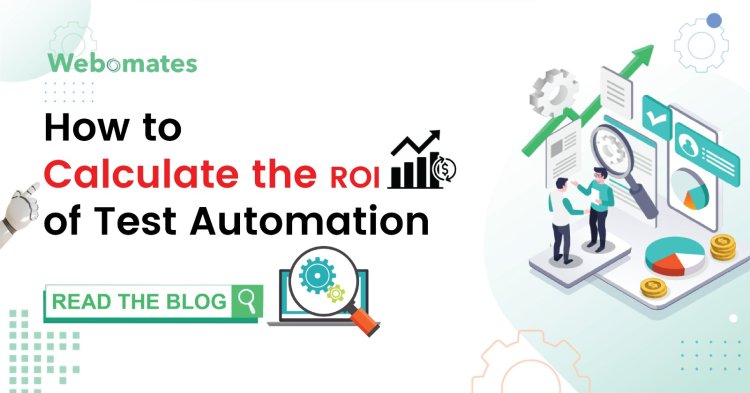How To Calculate The ROI Of Test Automation
Share this Post to earn Money ( Upto ₹100 per 1000 Views )

Understanding ROI in Test Automation
In the era of data-driven decision-making, leadership rarely invests a single dollar from the business budget without having a clear grasp of the projected returns. Agile teams in particular find themselves in the limelight, having to present their work and explain why test automation should be used together with other crucial tools.
The benefits of test automation extend beyond testers. Test automation also benefits the developers within each feature’s team as they too take an active part in test automation.
It involves using automated testing tools and scripts to execute tests, compare actual results to expected outcomes, and report test results. This approach offers a plethora of benefits such as increased test coverage, faster test execution, and early defect identification.
This article explores the significance of test automation along with the formula to calculate Return on Investment (ROI). Additionally, it lists a comparative table of benefits obtained from test automation.
The Formula: Measuring ROI
ROI is a critical metric that evaluates the effectiveness of an investment. When referring to test automation, ROI weighs the costs involved in implementing and maintaining automated tests against the benefits gained from improved testing efficiency and quality.
You can use the following formula to calculate ROI.
While there are various factors that contribute to ROI, you’ll need to understand the cost and time benefits associated with test automation to use the formula. Also, it’s just a metric that gives you the approximate return value you can get by embedding an automation strategy into your QA.
Calculating Time Benefits : A significant aspect of ROI is how test automation contributes to faster time-to-market. Calculate the time saved through automation in test execution, test case creation, and regression testing.
Not only does automation improve testing efficiency, but it also frees up valuable resources for more strategic and creative tasks.
Calculating Cost Benefits : It’s important to account for all expenses related to automation. By assessing the potential cost savings, teams can make informed decisions about implementing the test automation.
You can also consider both short-term and long-term savings, including reduced resoiurces costs and improved application quality.
Keys Points to Consider
Before you start calculating, you should be aware that it is quite challenging to arrive at quantifiable metrics. You need to approach test automation ROI as an estimation rather than an exact number.
The Perks of Embracing Cloud Testing
Testing as a Service enables the teams to focus on higher-value priorities like defect resolution and quality analysis. It creates test cases and test scripts and keeps them up-to-date.
Unlike traditional testing, cloud-based testing resources can be dynamically scaled up or down as per the project’s requirements. In a time when software development workloads can be unpredictable and differ greatly between different projects, this adaptability is crucial. Overall, adopting cloud testing can result in better quality, faster time-to-market, cost savings, and higher efficiency for your applications.
Partner with Webomates to get maximum ROI by implementing these principles.
Connect with us to discover how you can redefine and transform your software testing with Intelligent Automation services.
If you are interested in learning more about Webomates CQ service please click here and schedule a demo, or reach out to us at info@webomates.com







